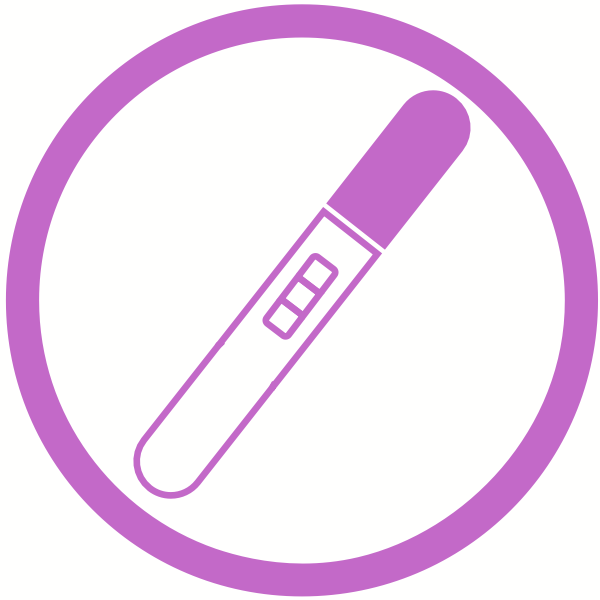Home / Testera tests / Ovulation test (streaming)

Ovulation test (streaming)
The test is used to diagnose ovulation, detecting elevated LH levels in the urine.
The rapid LH ovulation flow (urine) test detects an increase in LH in the urine, indicating that ovulation is likely to occur within the next 24-36 hours.

Accuracy >99 %
Sensitivity >99,9 %
Specificity >99,9 %

Results in 3 minutes

Sample - urine
- Current tests
- Package leaflet
Determine the day on which you will start testing according to the "When to start testing" table
- Keep the bag at room temperature (15-30 °C) before opening it. Remove the test from the sealed
bag and use it within one hour. - Remove the cover and hold the current test by the knob so that the absorbent tip is exposed
point downwards, directly into the urine stream and hold for at least 15 seconds until completely wet.
(See illustration below)
NOTE: Do not pee directly on the results box. If you prefer, you can urinate in a clean and dry
dip the cup into the urine, then hold only the absorbent tip of the dipstick for 15 seconds. - After removing the dipstick from the urine, immediately place the cap on the absorbent tip, place the
the current test on a flat surface so that the result box is facing upwards, and then start
count the time. - Once the test has started, you may notice a light-coloured stream moving around in the results window.
Check the result after 3 minutes. If no result is displayed, wait a minute longer.After 10 minutes
do not check the results again.
| Positive | Two lines are visible and the line in the test line area (T) is the same as or darker than the line in the control line area (C). This means that ovulation is likely to start within the next 24-36 hours. |
| Negative | Two lines are visible, but the line in the test line area (T) is lighter than the line in the control line area (C) or there is no line at all in the test line area (T). This means that no increase in hLH is detected. |
| Not valid | The control line does not appear. The most likely reasons for the non-appearance of the reference line are insufficient sample quantity or an incorrect procedure. Revise the procedure and repeat the test with a new test. If the problem persists, discontinue use of the test kit and contact your local distributor. |
Instruction leaflet
You can buy this test:




















